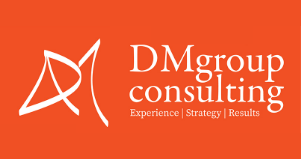Having a solid fundraising strategy is like having a treasure map for nonprofits. It shows you the way to success, helping your organization gather the resources it needs to fulfill its mission. Without a clear plan, fundraising efforts can feel scattered and ineffective, like trying to catch fish without a net. When a nonprofit has a well-thought-out plan, it aligns its team and increases its chances of hitting those all-important fundraising goals.
Fundraising professionals face a variety of challenges in their planning efforts. Finding and engaging donors, setting realistic goals, and crafting compelling messages are just a few hurdles that can stand in the way. But there are solutions to these common problems. This article lays out practical tips to help organizations overcome these challenges, boosting their chances of successful fundraising.
Identifying and Engaging Donors
One of the toughest parts of fundraising is finding potential donors. You can’t just cast a wide net and hope for the best; you need to know where to look and who to approach. But once you identify the right people, how do you keep them interested? Here’s how to tackle this challenge.
– Research: To uncover potential donors, start by researching people or entities with a vested interest in causes similar to yours. This might involve exploring past donation records or examining which kinds of contributions they’ve made to similar organizations.
– Understand their motivations: Once you identify potential donors, learn what drives them. Is it a personal connection to your cause, or perhaps a desire to see specific changes in the community? Understanding these motivations allows you to engage them more effectively.
– Build relationships: Think of fundraising as a long-term relationship, not a one-time transaction. Engage regularly through newsletters, updates, and personalized messages that relate to their interests and past interactions.
By carefully selecting and connecting with donors who resonate with your cause, you’re not just boosting your fundraising strategy—you’re doing so in a way that’s meaningful and lasting. Engaging them requires constant effort but pays off by creating a supportive network that stays with you through various campaigns.
Setting Realistic Fundraising Goals
Setting fundraising goals can be tricky. It’s easy to aim too high or too low. Clear and achievable goals, however, are crucial in keeping a team focused and motivated. The secret lies in defining goals that are not only ambitious but also grounded in reality.
Start by evaluating past efforts and results. This helps you understand what worked and what didn’t. Use this as a baseline to set new goals, ensuring they align with your nonprofit’s mission. Instead of chasing ambitious numbers without a plan, try to break goals down into smaller, manageable tasks. This empowers the team to see progress step-by-step and track success.
Aligning goals with your mission ensures that every fundraising effort serves a larger purpose, keeping team members and donors engaged. When everyone understands the ultimate goal, their contributions feel significant, reinforcing commitment and enthusiasm.
Identifying and engaging the right donors, along with setting clear and realistic goals, forms a solid foundation for an effective fundraising strategy. These steps pave the way for future success, supporting your organization in meeting and exceeding its fundraising objectives.
Crafting Compelling Fundraising Messages
Crafting messages that stand out can seem like a puzzle. Many organizations struggle to say what they mean in a way that makes people want to act. It’s more about storytelling than just stating facts. A good story connects emotionally and gives potential donors a reason to care. Effective communication uses the power of words to create a vivid picture of what the organization does and why it matters.
Start by considering what makes your organization unique. Think about the powerful stories and testimonials that highlight your impact. When you write, aim to transport the reader into the heart of your mission. Talk about the individuals or communities who benefit from your work and share their stories in an engaging way. This approach invites others to become a part of something meaningful.
Don’t forget to keep it simple. Messages filled with jargon can be a barrier. Instead, use clear language and strong calls to action. Tell people exactly what you need from them and why their help is important. By making your messages clear and relatable, you turn casual readers into committed supporters. These compelling appeals are your bridge to forming long-lasting connections with donors.
Leveraging Technology and Social Media
With the shift to a more digital world, relying on old-school methods can leave your fundraising trailing behind. The internet offers a range of tools that can take your efforts to the next level. Using social media and online platforms isn’t just trendy; it’s a smart way to reach a broader audience and engage donors where they spend a lot of their time.
Here’s how to go digital with your fundraising:
– Social Media Campaigns: Use platforms like Facebook, Instagram, or Twitter to share updates and create engaging campaigns. Visually rich content grabs attention and invites participation.
– Online Fundraising Tools: Incorporate platforms like GoFundMe or JustGiving to manage donations easily. These tools simplify the process for both you and the donor.
– Email Newsletters: Regularly send updates, successes, and current goals through email. Keep content concise and visually appealing to hold interest.
Jumping into the digital arena helps you stay relevant and dynamic, allowing potential donors to engage in your cause with just a few clicks. It’s all about making it as easy and accessible as possible for people to support your mission.
Measuring and Evaluating Success
Once efforts are underway, knowing how well you’re doing becomes crucial. Measuring success isn’t always about numbers but understanding the story they tell. How do you track the effectiveness of your strategies and make decisions based on what’s working or not?
Review your goals regularly. Check what you’ve achieved against what you intended to. Collect feedback from donors and team members—this input can uncover areas for improvement. Use tools and software that track engagement and progress. These insights allow you to pivot your strategies to better suit your goals.
Evaluating success is about more than celebrating wins. It’s a chance to learn and adapt. Use insights gained to refine processes and ensure your future efforts are stronger and more targeted. This cycle of assessment, learning, and adapting ensures that your fundraising initiatives are always improving.
Making Your Fundraising Strategy Work for You
Putting it all together, having a clear strategy allows you to maximize the efforts you put into fundraising. When you identify donors effectively, set clear goals, craft compelling messages, and leverage technology wisely, your organization can thrive.
These strategies enable nonprofits to tackle common challenges confidently and move toward sustainable growth. Keeping these tips in mind ensures that your fundraising strategy remains solid, relevant, and effective. Step by step, with thoughtful planning and continuous improvement, you’re setting up your nonprofit for success.
Maximizing your fundraising success takes more than just ambition; it requires a comprehensive approach aligned with your unique goals. If you’re ready to elevate your efforts with a refined and impactful fundraising strategy, consider reaching out for support. DM Group Consulting offers expert guidance to help nonprofits navigate these challenges with confidence and clarity. Let’s work together to ensure your organization not only meets but surpasses its fundraising objectives.




